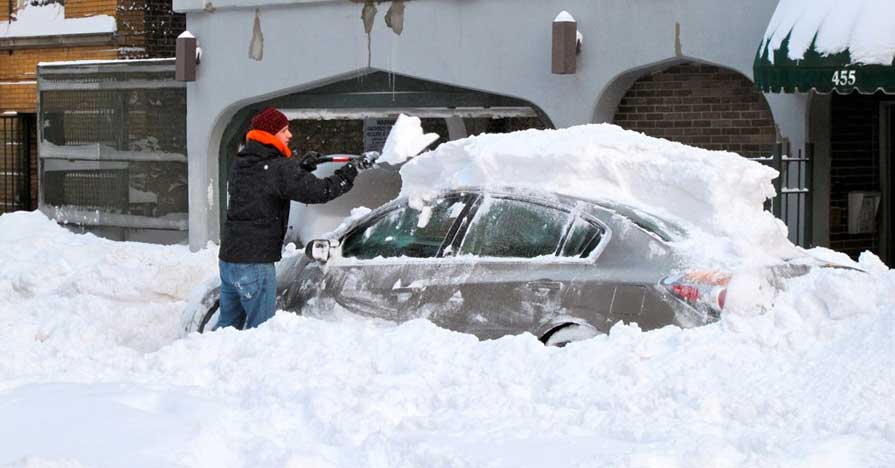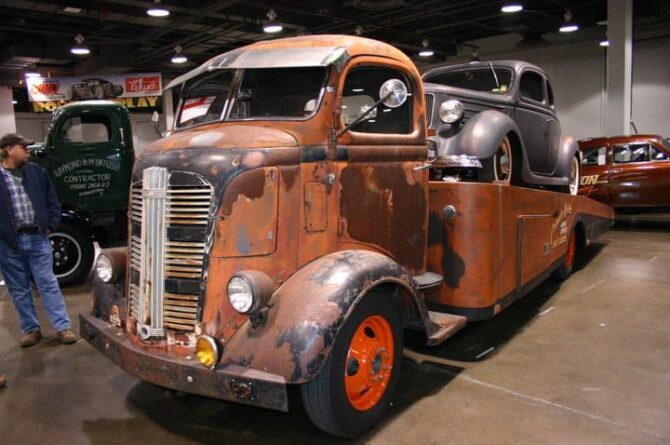If there is a time of year car enthusiasts dread – it’s winter. The threat of frigid temperatures, ice forming on body panels, and of course, road sludge and salt – can cause trepidation and uneasy feelings. But, without question, one winter threat that can lead to serious paint damage, is snow fall – specifically, removing it from the vehicle.
It’s assumed by many that snow damages car paint surfaces. That’s not quite accurate. In most cases, it’s the removal by brittle snow brushes, jacket sleeves, and gloves that wrecks the clear coat leaves scratches, and can even penetrate to the paint itself.
However, it doesn’t have to be a scary or threatening situation. And believe it or not, removing snow from your car can be done without damage at all. In fact, there are a few clever ways you can remove snow without scratching your paint. That’s what we’ll address today.
In this edition of the AvalonKing blog, we’ll dive into a few effective ways of removing snow from your car, truck, or SUV. We will also address a few common myths about snow and paint damage. Finally, we’ll throw some tips for protecting your car from scratching due to snow removal.
Challenges for Removing Snow from Your Car
It snowed in the foothills of Los Angeles on Thanksgiving this year. Seriously – LA??? So much for global warming huh – Greta? The truth is that Winter is Coming – and if you’re prepared for the potential of snow, and understand what can damage your car, you’ll be prepared for the White Walkers.
So, basically, the main pain point when removing snow from a car is that is the method of removal can scratch the paint surface, windows, window trim, and even headlight lamps. One myth that several people believe is that snow itself can cause damage to paint.
Again, that’s not accurate. The snow is just frozen water. However, it does contain contaminants from pollution and can mix with road grime, dirt, and debris from the elements. When it melts, that debris will turn into scratch-causing debris. When it’s still frozen or in snow form, it’s virtually harmless.
This leads us to the importance of using non-scratchable products or methods for removing snow from your vehicle. Let’s introduce a few of them, so you’ll know what supplies you need and how to best accomplish this step.
Steps for Safely Removing Snow from Your Car
When your car is covered with snow, it’s so tempting to take your broom, shovel, heck – even a rake to quickly remove snow. But, as we talked about above, this will result in damage.
To avoid this, consider these safer methods for removing snow from your car, truck, or SUV.
What Not to Use

The first thing we need to address is what you should not use for removing snow from the vehicle surface. Some of the NO GO items include brushes, brooms (those yard and shop brooms or dust (cattail brushes).
You should also not use those store-purchased brush/ice scraper tools. Those bristles are aggressive and pretty good at scratching clear coats and plastic trims.
So – what can you use? Consider this two-step method.
It’s what I call the foam brush and leaf blower method. For times when you have light snow on top of the car, you can use a leaf blower to simply “blow” the stuff off the surface. You might raise some eyebrows of neighbors, but heck with em’ – it’s your ride.
Foam Brush
This is something you can purchase on Amazon for about $20 bucks and will save you more than that is reduced paint correction during summer. It’s basically a foam-tipped plow, that is attached to an ice scraper on the other end.
Some of them are called “Snow Joe” foam brushes, and they work well. The flat surface makes it easier to remove bulk areas of snow. And the foam material reduces the potential of scratching on the surface. It basically acts as a squeegee on your paint surface.
But you don’t want the foam tip to squeegee the surface. This can lead to damage. The foam brush should be used to remove that deep, wet snow from your car – and leave about an inch of loose snow on the surface of the car for another method recommended below.
For added protection, you might want to consider adding a microfiber towel (or a few) wrapped around the foam brush. Consider this like a condom for the snow foam brush.
So – you’ll use the foam brush when you have heavy snow on top of the vehicle. The key is to knock off those top layers of the snow that might be hard or compact. You don’t want to brush the actual surface of the car though. It just introduces the potential of scratching.
Once you’ve knocked off all snow except for that last inch of loose snow, proceed to use the leaf blower to blow off the residual – as shown in the video above.
How to Protect Against Snow Removal Damage

Proactive car owners understand the value of protection on top of their clear coats. Whether it’s in the form of an automotive wax, a paint sealant, or a nano-ceramic coating, having that extra, sacrificial layer of protection can significantly reduce the potential of damage caused by snow removal.
Of course, you can also park the car in a garage, use a car cover, or under a carport if possible. If that’s not an option, refer to the steps above for removing snow – or the tips below for protecting the paint from constant exposure to the elements.
How a Nano-Ceramic Coating Works
There are several types of ceramic coating products that protect cars, trucks, and SUV’s. However, the best product by far is a nano-ceramic coating. This is basically a liquid polymer that is made from multiple inorganic materials that are likewise non-metallic that bond to a paint surface using nano-technology.
The silica or SiO2 is combined to the product to provide a hard layer of protection – or an Armor Shield over the surface it’s applied. The nano-technology allows these particles to fill those microscopic areas on porous materials. Once it does, it produces an exceptionally strong layer of protection.
So, what exactly is ceramic about this coating? Well, as we explained above, ceramic is a non-metallic material that is inorganic – and cures exceptionally hard. Non-stick cooking pans use a ceramic coating that allows you to cook eggs and other food without it sticking or burning.
Automotive applications with nano-ceramic coatings are slightly different. The “nano” is defined at the size of each molecule within the solution. The particles vary from 8o to up to 100 nanometers. For those that do not know, there are twenty-five nanometers in a standard inch.
The word “Nano” refers to the size of the molecules or particles in the coating itself. These particles range from 80-100 nanometers. In case you were not aware, there are 25 million nanometers in an inch.
The Pros and Cons of Using a Nano-Ceramic Coating
Like any other consumer product, there are some pros and cons to consider about nanoceramic coatings.

- They are engineered to deliver superior protection. Basically, a sacrificial layer of protection to reduce exposure to toxins, UV rays, and other contaminants that accelerate oxidation.
- These coatings are exceptionally hard – that rate 9H hardness on the pencil scale. This results in a longer-lasting solution than car wax – which usually lasts about two months, and must be removed and reapplied multiple times each year.
- It is resistant to graffiti, scratches, bird droppings, bug guts, and more.
- Hydrophobic properties of these products improve the process of washing your vehicle. Plus, it keeps the car cleaners for longer times.
- Exceptional shine and luster for years.
Cons
- The application and prep work involved in these products is tedious and can be complex for some users.
- Professional-grade products are expensive – like up to $3,500 or more in some cases.
- You should apply it indoors – like a garage and let keep it off the road for at least 24 to 48 hours.
There are some DIY nano ceramic coating products, like our Armor Shield IX that are easier to apply than professional grade coatings and protect just as well against harsh elements like extreme hot, cold, ice and snow.
Wrapping it Up
Once you get through the cold winter season, and you’re thinking about making changes to your paint protection program, consider adding a high-quality ceramic coating like Armor Shield IX to your spring and summer plans.
Armor Shield IX, for example, lasts between 2-5 years on average, and is covered by a two year guarantee via AvalonKing’s warranty program. It is also rated among the easiest to apply, and has an outstanding positive review record and comes backed by stellar customer service. Browse our blog to review more tips and tricks on taking care of your car in winter, summer, and of course, the pros and cons of using different paint protection products.













1 comment
Jason
I’m frustrated reading a joke about Greta Thunberg caring about the future of our planet’s climate.. Enjoy the relentless forest fires.
I’m frustrated reading a joke about Greta Thunberg caring about the future of our planet’s climate.. Enjoy the relentless forest fires.